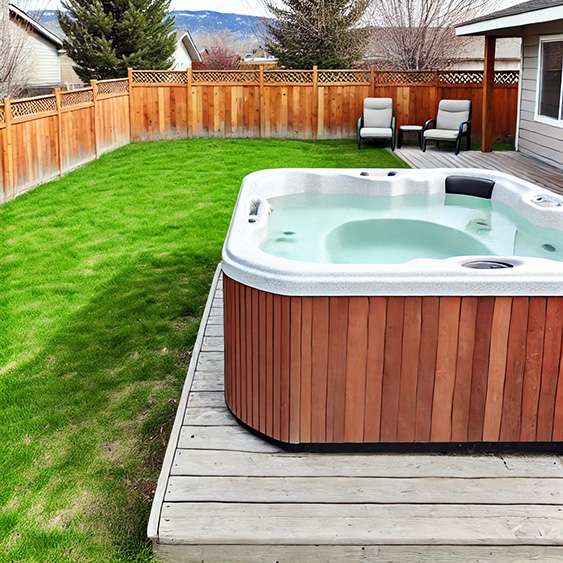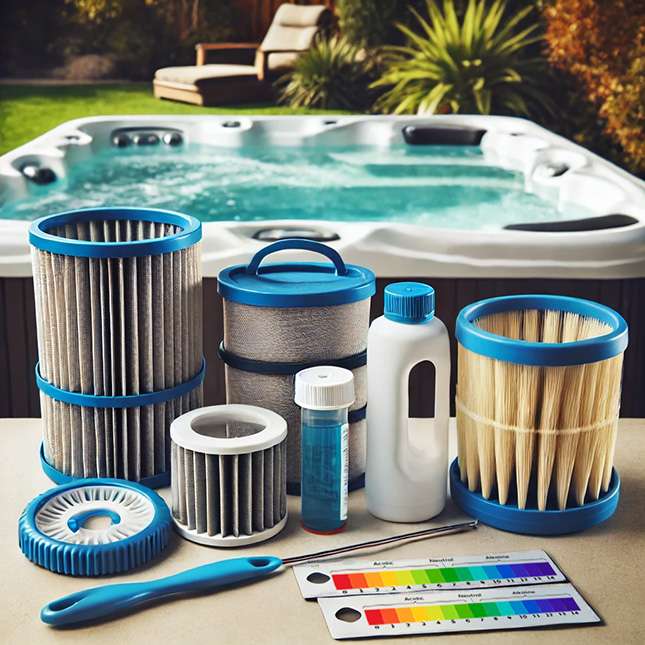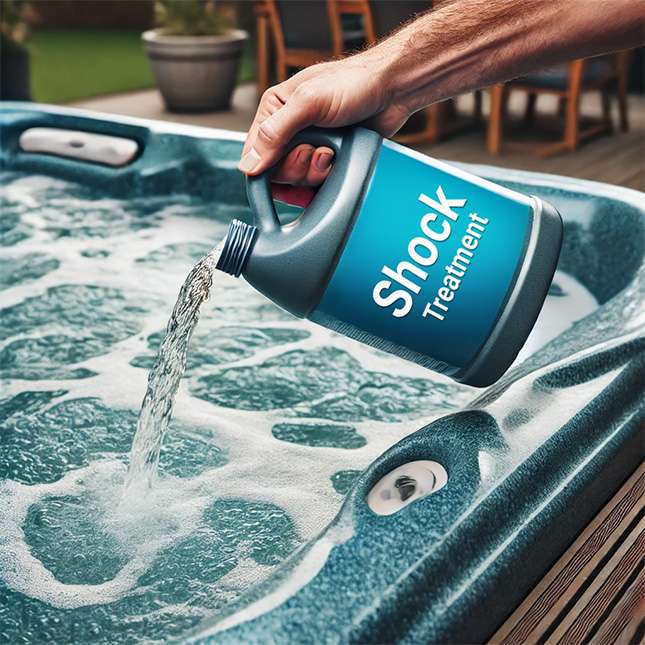Keeping your hot tub clean shouldn’t feel like chemistry class 🧪 — and that’s where shocking comes in. A quick weekly shock treatment is one of the easiest ways to keep your water crystal-clear, safe, and ready to enjoy. In this article, we’ll break down why shocking matters, when to do it, and the different types of shocks so you can spend more time soaking and less time troubleshooting.
Why is Shocking a Hot Tub Necessary?
1. Eliminating Organic Contaminants
When you use your hot tub, various organic contaminants such as sweat, body oils, lotions, and even makeup enter the water. Over time, these substances accumulate, leading to cloudy water, unpleasant odors, and potentially harmful bacteria. Regular shocking breaks down these contaminants, restoring clarity and ensuring the water remains safe.
2. Removing Chloramines and Bromamines

3. Preventing Algae Growth
4. Enhancing Water Clarity
When Should You Shock Your Hot Tub?
1. Frequency of Use
2. After Heavy Usage
3. After a Water Change
4. When Water Becomes Cloudy or Odorous
5. After a Period of Inactivity
Types of Shock Products
1. Chlorine Shock
2. Non-Chlorine Shock
3. Bromine Shock
Step-by-Step Guide to Shocking a Hot Tub
Step 1: Test the Water
2. Step 2: Calculate the Correct Dosage
Step 3: Add the Shock Treatment

Step 4: Let the Water Circulate
Step 5: Test the Water Again
Step 6: Enjoy Your Hot Tub
Common Mistakes to Avoid
1. Not Testing the Water First
2. Using Too Much or Too Little Shock
3. Shocking During the Day
4. Not Allowing Enough Circulation Time
5. Ignoring Regular Maintenance
Tips for Maintaining Water Quality After Shocking
1. Regularly Check and Adjust pH Levels
2. Clean the Filters
3. Use a Hot Tub Cover
4. Not Allowing Enough Circulation Time
5. Drain and Refill the Water Periodically

6. Monitor Sanitizer Levels
Shocking and Hot Tub Health
Frequently Asked Questions
Q: Can I use my hot tub immediately after shocking?
Q: What happens if I don't shock my hot tub regularly?
Q: Can I over-shock my hot tub?
Q: Is it safe to shock my hot tub during winter?
Q: How long does it take for the chlorine levels to drop after shocking?
Conclusion
Shocking your hot tub is essential to keeping it clean, safe, and enjoyable. Understanding why shocking is necessary, choosing the right products, and following proper procedures ensure your hot tub stays in top condition for years. Regular maintenance, including shocking, testing water chemistry, and cleaning filters, will enhance your hot tub experience and protect your investment.
Whether you’re an experienced hot tub owner or new to spa maintenance, following these guidelines will help you enjoy crystal-clear, refreshing water every time you relax in your hot tub. If you have any questions, don’t hesitate to call Love’s Hot Tubs, and be sure to download our free PDF guide with step-by-step instructions on how to shock your hot tub.

